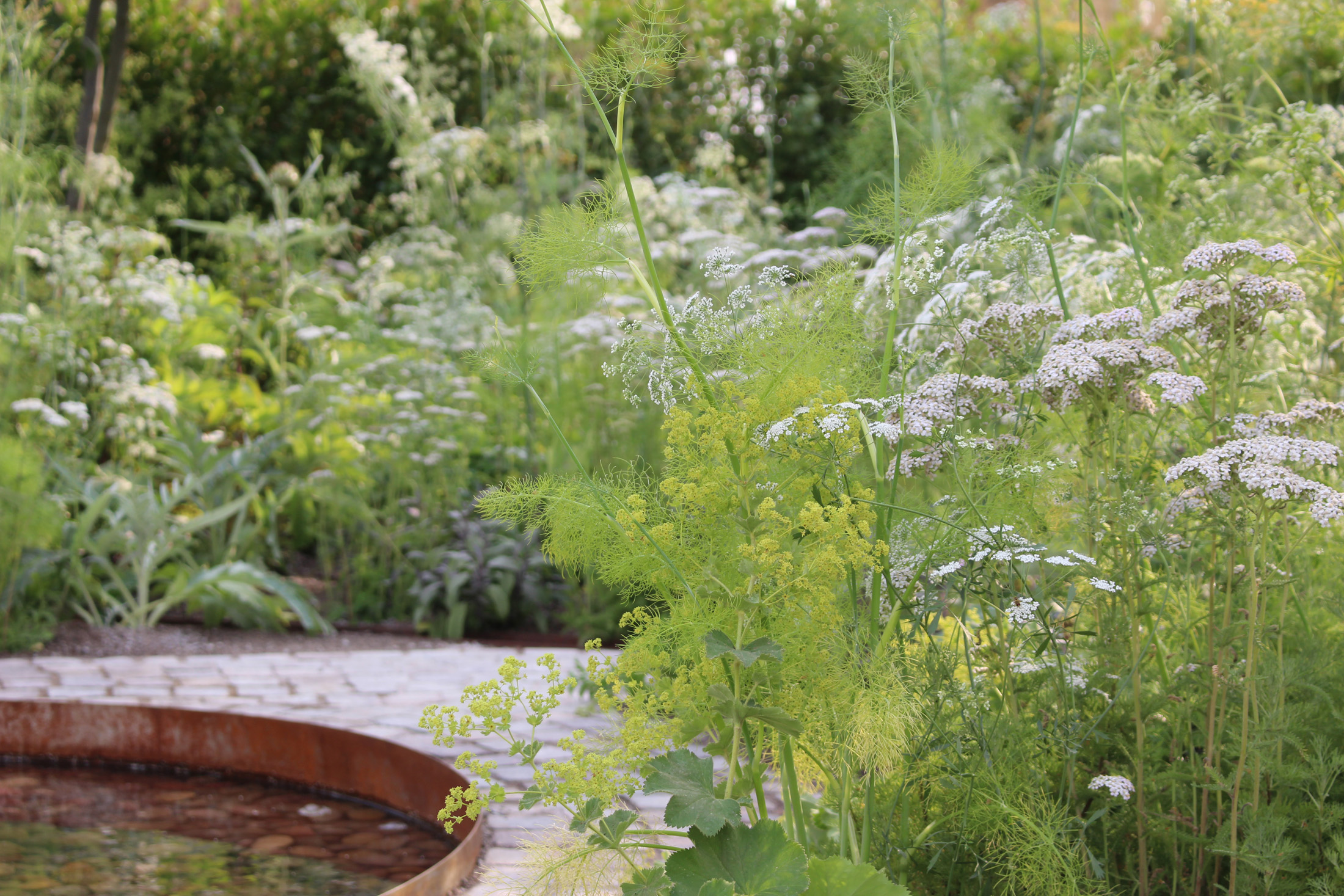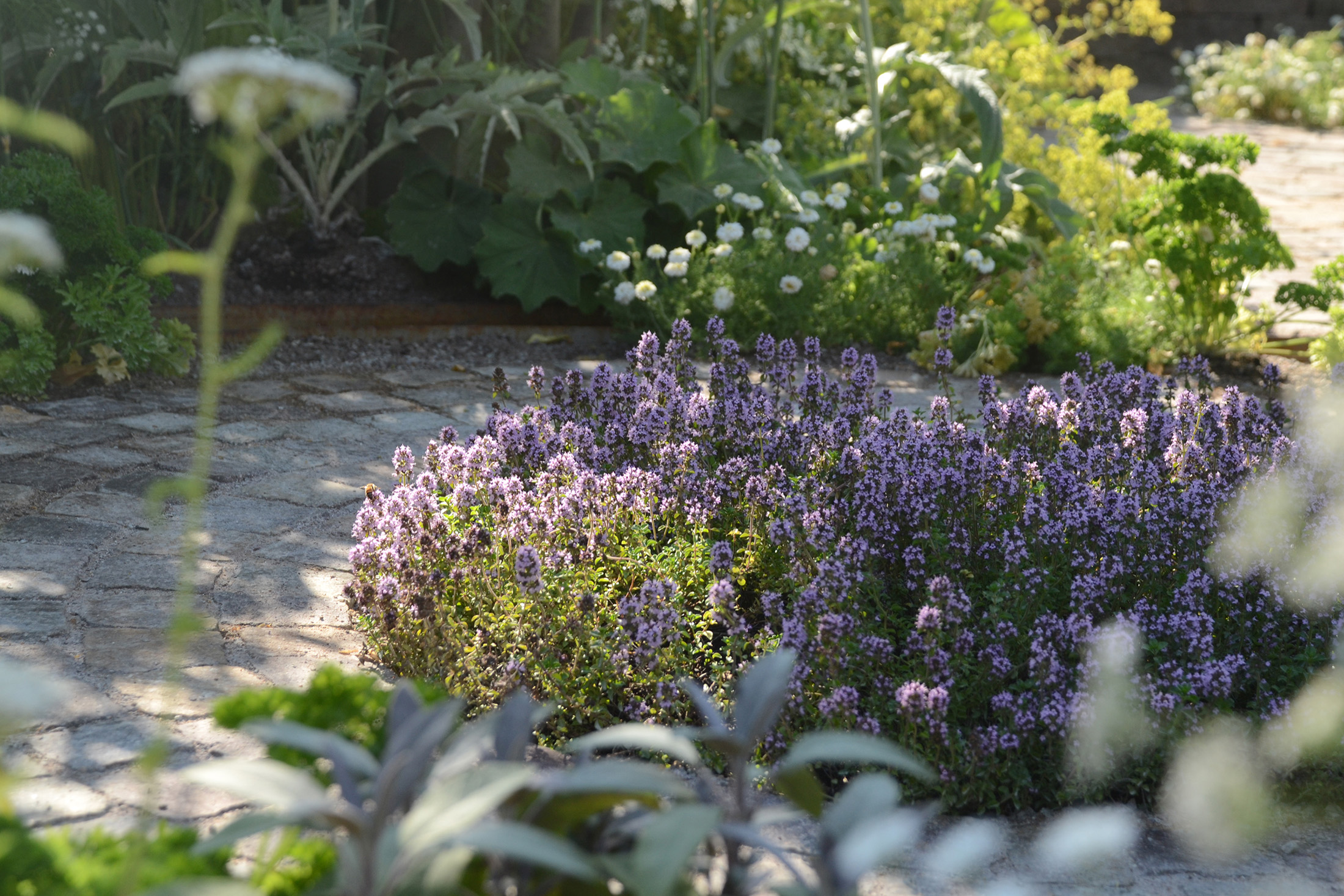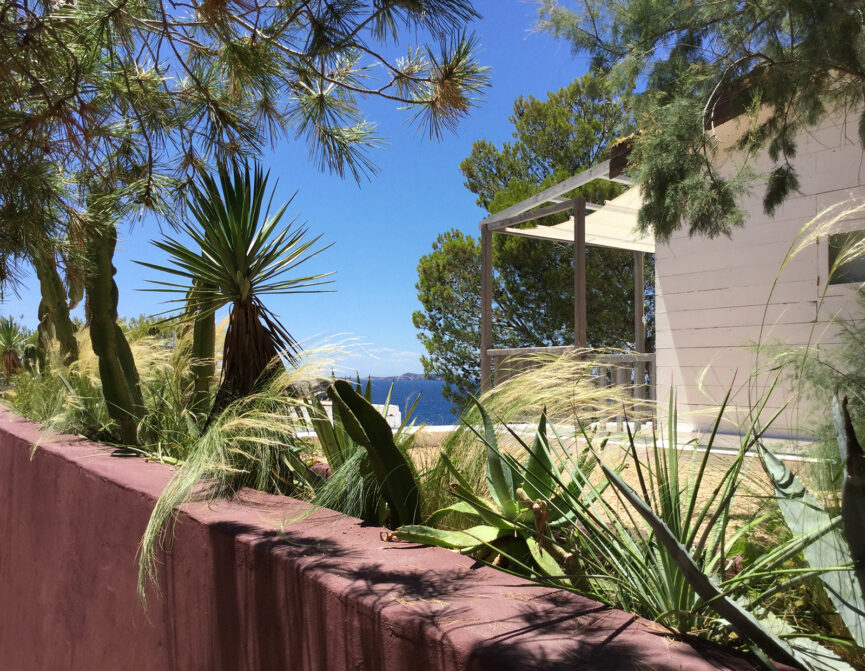The award-winning landscape designer’s advice for transforming your outdoor space. Plus, what should be on your summer to-do list.
There’s nothing like the smell of summer roses. The taste of a homegrown tomato. Watching your garden come to life in spring. Or the deep ochres of autumn. Even in the darkest days of winter, there’s a certain sparkle to a frost-covered branch.
But do you need a big garden to enjoy them? No, says landscape designer Alexandra Noble. Since opening her namesake studio in 2017, she’s curated spaces as diverse as west-London patios, pollinator-friendly gardens in Chiswick and orchards rambling across a half acre of Sussex countryside.
Before honing her horticultural skills under Jo Thompson and Luciano Giubbilei, Alexandra spent years studying architecture. And it’s perhaps this which explains the considered, almost geometric signature in her garden designs. Take her Health and Wellbeing Garden for the 2018 Hampton Court Palace Flower Show – winner of the RHS People’s Choice Award. It’s compact yet profoundly meditative, with a pathway that meanders between pools and healing plants. In her own courtyard garden, a single cherry tree sits next to a cantilevered glass box that projects from her home.
Taking a break from sowing annuals and designing her latest project, Alexandra shares her advice on making the most of gardens big and small (and if you have none at all). Plus, the green-fingered jobs for your summer to-do list and why steering clear of peat is good for the planet.
What should we have on our garden to-do list for summer?
Many annual flowers can be sown in June such as cosmos, nasturtium, night-scented stock, pot marigold and love-in-a-mist, so get sowing those seeds now [June] for flowers later in the summer/early autumn!
At this time of year, it’s always good to keep on top of weeding by digging out perennials such as couch grass or bindweed. If you haven’t already, you may also want to pop stakes to support plants where needed but be careful not to damage the root system.
Take notes on what’s working and what isn’t for next year. Are there any gaps in the bed you’d like to fill? It’s also a great time to plan which bulbs to plant this autumn such as daffodils and tulips, for flowering next spring.


In cities, outdoor space can be limited. Any tips for making the most of smaller gardens?
When approaching the design of small gardens, I tend to keep the layout as minimal and uncluttered as possible. Look for multi-functional pieces such as benches that double up as storage. And consider evergreen climbing plants, which can create a lush, immersive feel without occupying too much space on the ground. Evergreen shrubs and ferns are great as year-round points of interest, too.
How do you suggest introducing greenery to balconies and roof terraces?
Arrange pots in clusters of varying sizes and consider planting them with your favourite herbs to use in teas or cooking. Consider scented plants, too. The fragrance will be carried on a breeze while you sit and enjoy the space.
Any low-maintenance ideas for those short on time or green fingers?
Consider using a palette of drought-resistant plants. Ornamental grasses are a great option too – the evergreen/ semi-evergreen varieties just need to be combed through occasionally to get rid of dead leaves, and the deciduous ones need to be cut back once a year.
Leave areas of lawn unmown! Not only does this save on maintenance time, but it also allows wildflowers in the grass to bloom, providing nectar for pollinators. Even cutting once a month rather than once every two weeks makes a huge difference.
So do you think our gardens can have a planet-positive impact?
I’d say if you’re purchasing compost, make sure it’s peat-free. Peatlands are the world’s largest carbon store and harvesting for compost releases a vast amount of it contributing to climate change. Meanwhile, the unique biodiversity of the peat bog habitat is destroyed along with the rare birds, butterflies, dragonflies and plants it supports. Heartbreakingly, at least 94 per cent of the UK’s lowland peat bogs have already been destroyed or damaged.
And avoid using artificial grass. There are many reasons to swerve it, but the key ones are the volumes of plastic used the maintenance involved (brushing, washing and hoovering!). It’s often too hot to use during summer and there’s no benefit to wildlife.


Three elements essential for the perfect garden are…
A well-placed seating area, pollinator-friendly planting and a sense of seclusion.
Where do you go for landscape inspiration?
When travelling abroad, nothing beats a walk in natural landscapes to see endemic plant communities growing wild. I also adore exploring private gardens through the National Garden Scheme as well as the grounds of National Trust properties.
Nature doesn’t need to stop at your doorstep. How can we bring more of the outside into our homes?
I love to bring cut flowers and branches from the garden to enhance the outdoor connection of my interiors. This year, I’ll also be planting forced paperwhite narcissus and amaryllis bulbs indoors in autumn so they flower during the winter months.
What’s next for you?
I’m currently designing a public-realm planting scheme for a street in Mayfair and working on residential projects for private clients.




